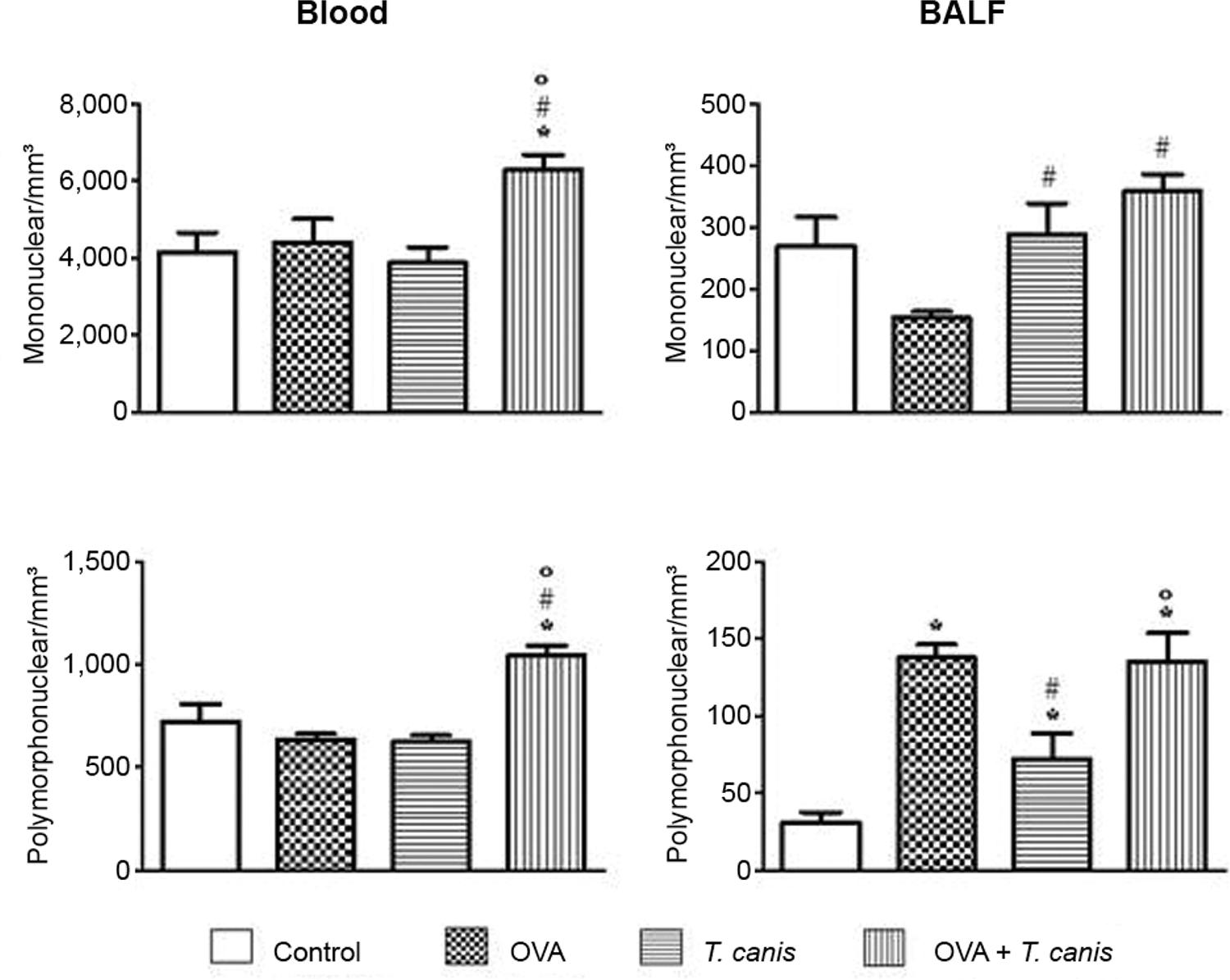The protective effect of infectious agents against allergic reactions has been thoroughly investigated. Current studies have demonstrated the ability of some helminths to modulate the immune response of infected hosts. The objective of the present study was to investigate the relationship between Toxocara canis infection and the development of an allergic response in mice immunised with ovalbumin (OVA). We determined the total and differential blood and bronchoalveolar lavage fluid cells using BALB/c mice as a model. To this end, the levels of interleukin (IL)-4, IL-5 and IL-10 and anti-OVA-IgE were measured using an ELISA. The inflammatory process in the lungs was observed using histology slides stained with haematoxylin and eosin. The results showed an increase in the total number of leukocytes and eosinophils in the blood of infected and immunised animals at 18 days after infection. We observed a slight lymphocytic inflammatory infiltrate in the portal space in all infected mice. Anti-OVA-IgE levels were detected in smaller proportions in the plasma of immunised and infected mice compared with mice that were only infected. Therefore, we concluded that T. canis potentiates inflammation in the lungs in response to OVA, although anti-OVA-IgE levels suggest a potential reduction of the inflammatory process through this mechanism.
toxocariasis; ELISA; eosinophils; IgE; lungs





